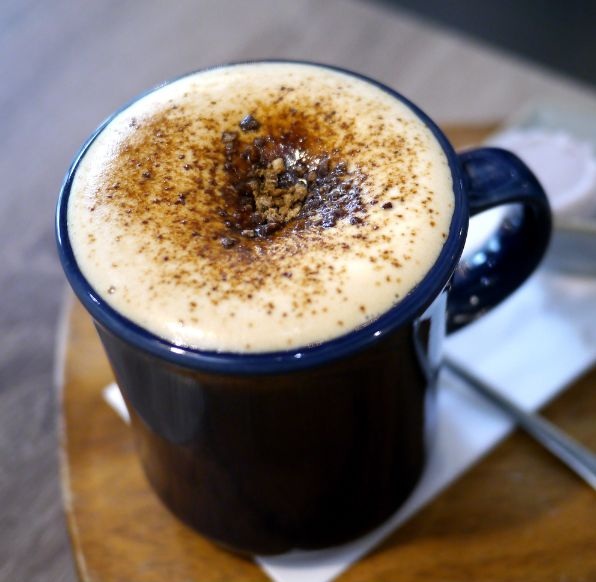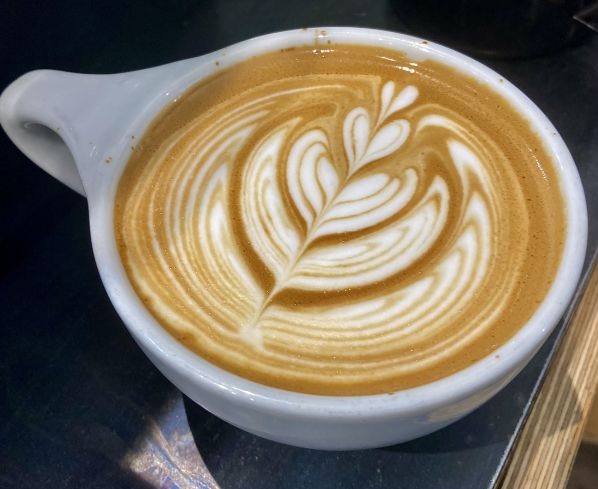When stepping into a coffee shop, one of the most common dilemmas people face is choosing between a cappuccino and a latte. Both beverages are popular espresso-based drinks, often enjoyed for their rich flavors and creamy textures. While they may look similar at first glance, cappuccino and latte have distinct differences in terms of ingredients, preparation, taste, and presentation.
But have you ever wondered what truly sets them apart? The key difference lies in their milk-to-espresso ratio and texture. Apart from their texture, cappuccino and latte also differ in serving size, preparation method, and caffeine content.
Difference Between Curd and Yogurt
This article explores the key differences between cappuccino and latte, exploring their ingredients, brewing methods, textures, and caffeine content.
Cappuccino Vs Latte: What is the difference?
Both drinks start with the same base ingredient—espresso—but what sets them apart is the ratio of steamed milk to milk foam. One offers a stronger, bolder taste, while the other is known for its velvety smoothness. The distinction between the two isn’t just about preference; it also relates to milk texture, foam thickness, and serving style.
What is a Cappuccino?

Cappuccino is a classic Italian coffee beverage crafted with equal parts espresso, steamed milk, and milk foam in a 1:1:1 ratio. Interestingly, do you know the name "cappuccino" originates from the Capuchin friars, as the rich brown hue of espresso combined with frothy milk resembles the color of their robes.
To prepare a cappuccino, a single or double shot of espresso is poured first, followed by a layer of steamed milk and topped with thick milk foam. This foam serves as an insulator, keeping the coffee warm while adding a smooth, creamy texture. Often garnished with a sprinkle of cocoa powder or cinnamon, cappuccinos offer both a flavorful and visually appealing experience. With less milk than a latte, the bold espresso taste remains prominent. Typically served in 6-ounce cups, cappuccinos highlight the coffee's intensity while the thick foam provides the perfect canvas for intricate latte art.
What is a Latte?

A latte, or caffè latte, is a coffee beverage that contains more steamed milk than espresso, resulting in a creamier, milder flavor. Unlike cappuccino, a latte has a higher milk-to-espresso ratio, with about one-third espresso and two-thirds steamed milk, finished with a thin layer of foam.
Lattes are served in larger cups (8 to 12 ounces) and have a silky texture due to the high milk content. This makes them a popular choice for those who prefer a less intense coffee taste. Because of the smooth microfoam layer on top, lattes are often used for latte art, intricate designs with steamed milk. Additionally, flavored syrups such as vanilla, caramel, and hazelnut can be added to enhance the taste.
Difference Between Rabbit and Hare
Key Differences Between Cappuccino and Latte
Though cappuccino and latte share similar ingredients, their preparation and taste profiles differ significantly.
1. Milk-to-Espresso Ratio
- A cappuccino consists of equal parts espresso, steamed milk, and milk foam (1:1:1 ratio).
- A latte has more steamed milk and less foam, with a typical 1:3:1 espresso-to-milk-to-foam ratio.
2. Texture and Consistency
- Cappuccino has a thicker foam layer, making it airier and frothier.
- Latte has a smooth, velvety texture due to the higher proportion of steamed milk.
3. Flavour Profile
- Cappuccino has a stronger, bolder coffee flavour due to the equal parts of espresso and milk.
- Latte is milder and creamier because the espresso is diluted with more steamed milk.
4. Serving Size
- Cappuccino is typically served in small 6-ounce cups.
- Latte is served in larger 8- to 12-ounce cups.
5. Milk Foam
- Cappuccino has a thick, foamy layer on top, which helps maintain heat and adds texture.
- Latte has a thin layer of foam, making it less frothy and more liquid in consistency.
6. Customization and Add-ons
- Cappuccinos are often dusted with cocoa or cinnamon powder.
- Lattes can be customized with flavored syrups like caramel, vanilla, or hazelnut.
Difference Between ICC Champions Trophy and World Cup
Comparison Table: Cappuccino vs. Latte
Here’s a quick comparison between Cappuccino and Latte in tabular form:
| Feature | Cappuccino | Latte |
| Espresso-to-Milk Ratio | 1:1:1 (equal parts espresso, steamed milk, and foam) | 1:3:1 (more milk, less foam) |
| Texture | Thick, foamy, and airy | Smooth, creamy, and velvety |
| Cup Size | Typically served in smaller cups (150-180ml) | Served in larger cups (240-300ml) |
| Flavour | Strong, bold coffee flavour | Milder, milkier taste |
| Milk Foam | Cocoa powder, cinnamon | Flavored syrups (vanilla, caramel, etc.) |
| Common Add-ons | Soft, uniform color | Coarse, changes seasonally |
Conclusion
Cappuccino and latte, while similar in ingredients, differ significantly in taste, texture, and preparation. A cappuccino offers a stronger coffee kick with its equal parts of espresso, steamed milk, and foam, whereas a latte has more steamed milk, making it smoother and milder. The choice between the two comes down to personal preference—if you love bold coffee with thick foam, opt for a cappuccino, but if you enjoy a creamier and more delicate flavour, a latte is your go-to. No matter your choice, both drinks offer a delicious coffee experience for any time of the day.
You May Also Like...
Picture Puzzle IQ Test: Can You Spot The Hidden Heart In 5 Seconds?
Brain Teaser Personality Test: The Door You Choose Reveals Who You Are
Tricky IQ Riddles: Spot Who Is In Danger? Test Your Attention To Detail In 5 Seconds!
Comments
All Comments (0)
Join the conversation